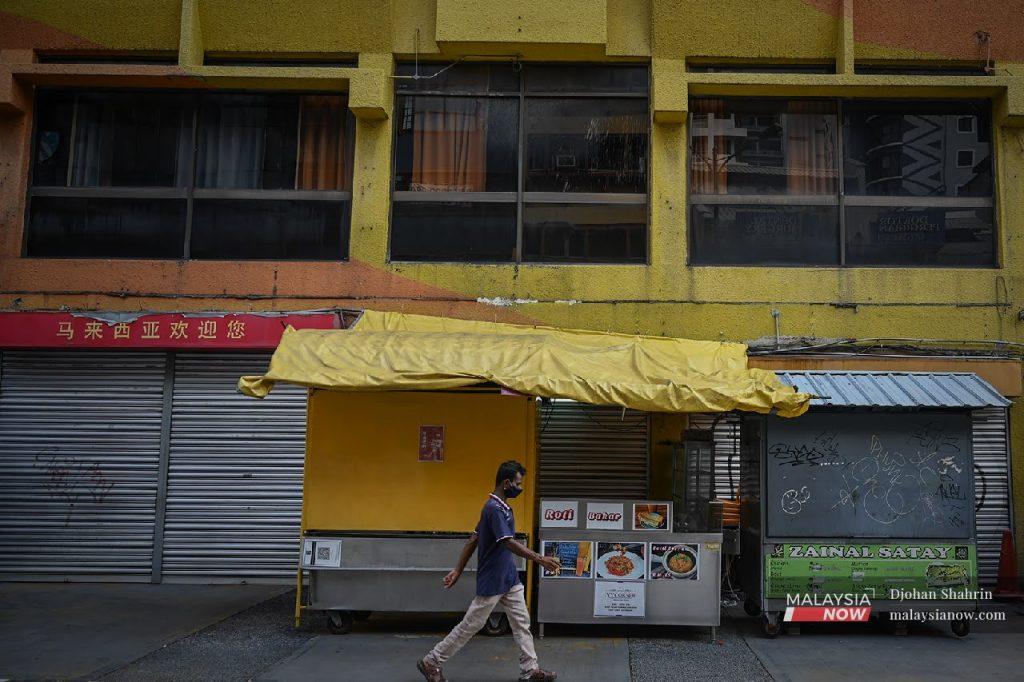RM4.8 billion for job creation not enough, experts say
They say Putrajaya's JaminKerja and NCSP schemes require further scrutiny.
Just In
Experts have urged the government to focus on creating meaningful and well-paid jobs instead of propping up low-paid jobs with handouts, in the wake of Putrajaya’s job creation plan announced in the 2022 budget as well as its National Job Creation Strategic Plan (NCSP).
Armed with a RM4.8 billion allocation, the job creation plan known as Jamin Kerja Keluarga Malaysia or JaminKerja is aimed at creating 600,000 job opportunities – a much needed chance for the many who became unemployed during the Covid-19 pandemic.
Economist Geoffrey Williams however questioned the extent to which the allocation would stretch.
“This is equivalent to RM8,000 per job for a year, or RM667 a month,” he told MalaysiaNow.
“This is not enough to create new jobs although it could act as an extension of the wage subsidy to support existing jobs.”
According to the Department of Statistics Malaysia (DOSM), the current rate of unemployment is 4.6%, which equates to some 748,000 individuals out of work.
Williams said a more effective approach would be to implement a negative income tax scheme for employees and companies to encourage people to work.
“In this scheme, people who work but earn below a basic threshold would receive tax credit to top up their income,” he said.
“So they have an incentive to work and to find work, even if it’s poorly paid, as they will get a top-up.”
The NCSP meanwhile, announced by Prime Minister Ismail Sabri Yaakob in September, aims to produce a more resilient and highly skilled workforce with six core plans: enhancing industry-academia collaboration, nurturing talents to meet the needs of industry, empowering local entrepreneurs to thrive in the current economic situation, leveraging the gig economy to find income-generating opportunities, boosting the growth of new and modern sectors, and accelerating the adoption of modern workplace practices.
Shahryn Azmi, founder and executive director of the MakeTimePay portal, said of the six components, only the fourth has any “real teeth” while the other five contain nothing new or able to achieve quick results in the realm of unemployment.
“Reducing unemployment by subsidising the salaries paid by companies is fundamentally the cornerstone of most government initiatives to date, but it has to be seen as the stopgap measure that it is,” he said.
“The moment that financial aid is withdrawn, unless there is more than adequate reason for the employer to retain the individual at a fair level of compensation, the business pressures to release the worker will return.”
Speaking to MalaysiaNow, he said policymakers and corporate executives have yet to appreciate the full scope of gig work, beyond just food delivery and ridesharing.
“The problem is that the nature of work is changing rapidly. Economies are transforming and all at speeds far quicker than we seem to be able to understand as a nation.
“Before we consider this to be a reactive policy born of economic desperation, consider the fact that research is showing that come 2025, just four years from now, half of the entire US workforce will be employed on a gig basis,” he said.
Amanda Yeo, a research analyst with think tank Emir Research, said it was time for the government to emphasis the talent development of the Gen Z and millennials.
“By prioritising high-skilled and high-income job creation, young Malaysians could find jobs that match their academic qualifications and desired income level.
“They would also be less likely to go overseas for better job opportunities if they are happy with their current jobs,” she said.
DOSM numbers also show that most jobs created are in the semi-skilled categories. Statistics for the third quarter of 2021 revealed that as many as 9,300 semi-skilled jobs were created, followed by 4,500 skilled jobs and 1,200 low-skilled jobs.
Yeo said while the government should continue creating more full-time jobs for the youth, initiatives must also be put in place to make them less likely to seek money-making opportunities through informal activities.
Williams, meanwhile, said job creation schemes had very rarely proven a success anywhere in the world.
“The mindset is wrong,” he said. “It gives subsidies to low-paid jobs or short-term training appointments instead of focusing on investment in new forms of high-value activities.
“These can only come when the economy opens up and begins to recover. So ending restrictions, opening the economy fully, and getting back to normal are still priorities, and we must not overreact to the Omicron variant.”
Subscribe to our newsletter
To be updated with all the latest news and analyses daily.
